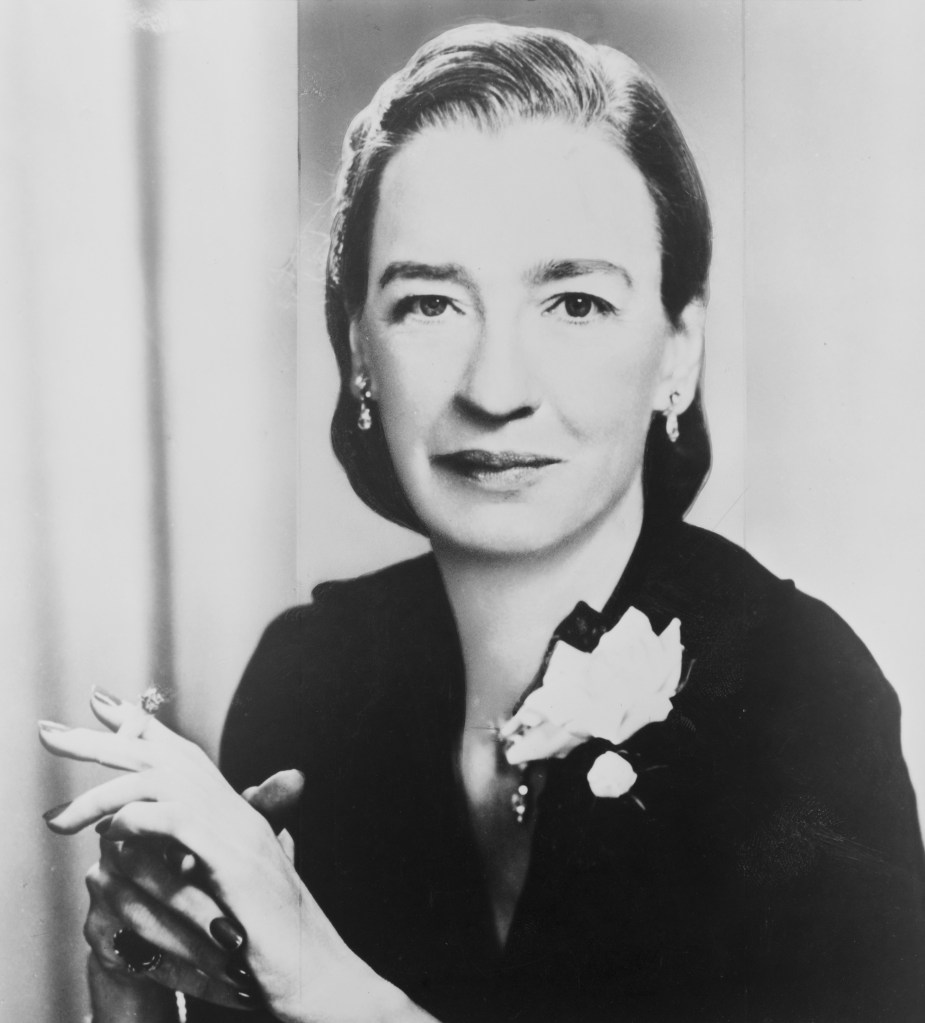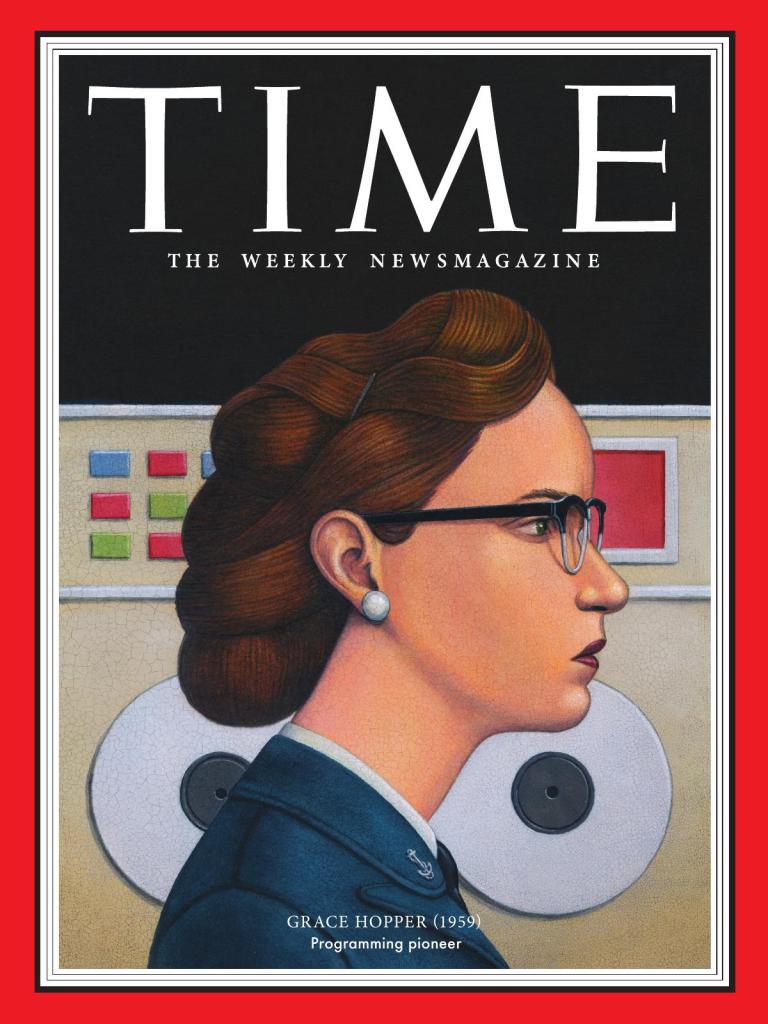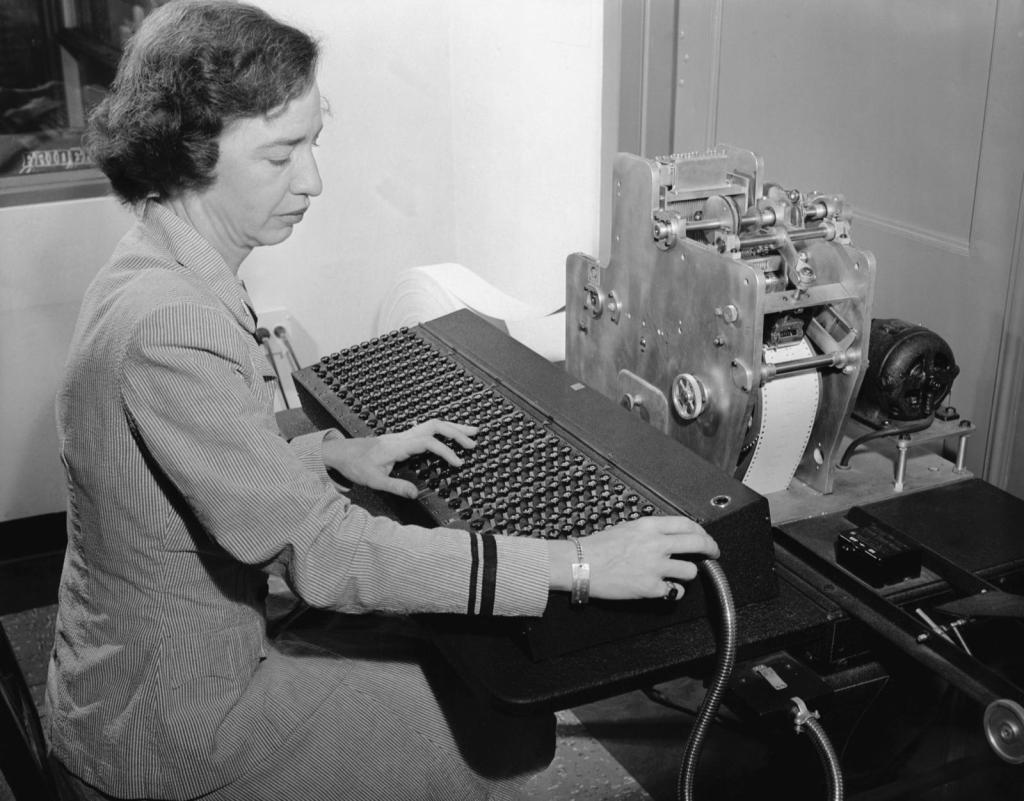
Grace Murray was born in New York City in 1906. In an era when girls were expected to play house, Grace loved climbing trees, hiking, sailing, and reading. She also played basketball, hockey, and water polo—none of which was a typical activity for girls. Grace had a dollhouse, but she was more interested in building toy furniture for it than in playing with dolls. She even built an elevator for it.

Grace liked figuring out how things worked. When she was 7, she took apart her alarm clock. Gears and cogs flew out of the clock, but she couldn’t make sense of the mechanism. Instead of giving up, she dismantled all the other alarm clocks in the house, determined to discover how they worked.
Grace’s parents encouraged her curiosity. They took her to museums, libraries, concerts, and lectures. They also spent summers near a lake, where they hiked, swam, sailed, and explored. Once, Grace’s canoe capsized. Her mother, who was watching from the shore, called out, “Remember your great-grandfather, the admiral!” This reminder gave Grace the strength to recover her canoe and return to shore. Grace would later say that her great-grandfather inspired her admiration for the U.S. Navy.

IN HER HONOR On August 30, 1997, the United States Navy’s U.S.S. Hopper travels to San Francisco Bay, in California. It was named for Grace.
THOR SWIFT—AP PHOTOWhen Grace was 8, her father became ill and had to have both legs amputated. He never complained. His bravery inspired Grace to face challenges head-on. If her father could be so brave, Grace felt that she could conquer anything.
Grace’s father worried that he might not always be able to provide for his daughters. He wanted them to get a good education and be able to support themselves. He encouraged them to go to college and envision careers. Grace started at Vassar College when she was 17. She studied math and physics, then went to graduate school at Yale. With a PhD in mathematics, the little girl who’d spent her days tinkering with clocks would become one of the greatest computer minds of her generation.
Leader in Coding
After graduating from Yale, Grace wanted to join the U.S. Naval Reserve. In 1943, she was accepted, and assigned to the Bureau of Ships Computation Project, at Harvard University. There, she worked on the first large-scale automatic calculator in the U.S. Her team came up with new ways to interact with computer data. Grace believed the data should be similar to human language. Later, she helped develop a computer language called COBOL, which uses English words.

Grace was a pioneer in computer science. At a time when women were rarely seen in STEM fields, she worked with other experts to develop computer programming as it’s known today.
Fast Facts
Grace rose to the position of rear admiral in the U.S. Naval Reserve.
Grace loved to teach. Before her years in the Navy, she was a math professor at Vassar.
Grace was nicknamed Amazing Grace because of her great accomplishments.
Grace helped popularize the term debugging, after a moth was found in a computer.
Grace won many awards. In 1991, she was the first individual woman to get the National Medal of Technology, the highest achievement in that field. In 2016, her memory was honored with a Presidential Medal of Freedom.

IT ALL ADDS UP Grace Hopper programs an early calculating machine in the 1940s.
BETTMANN/GETTY IMAGES











